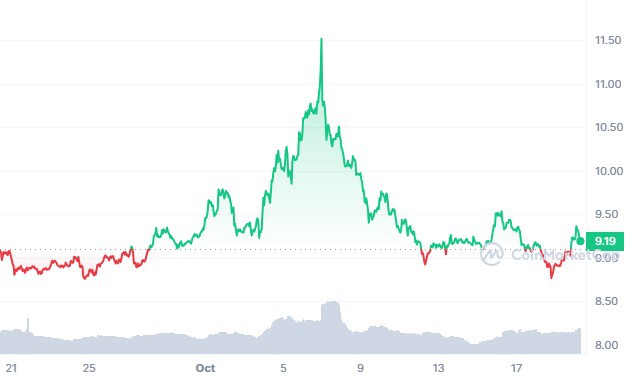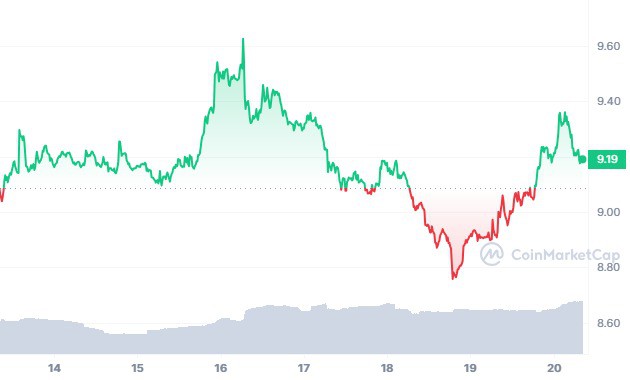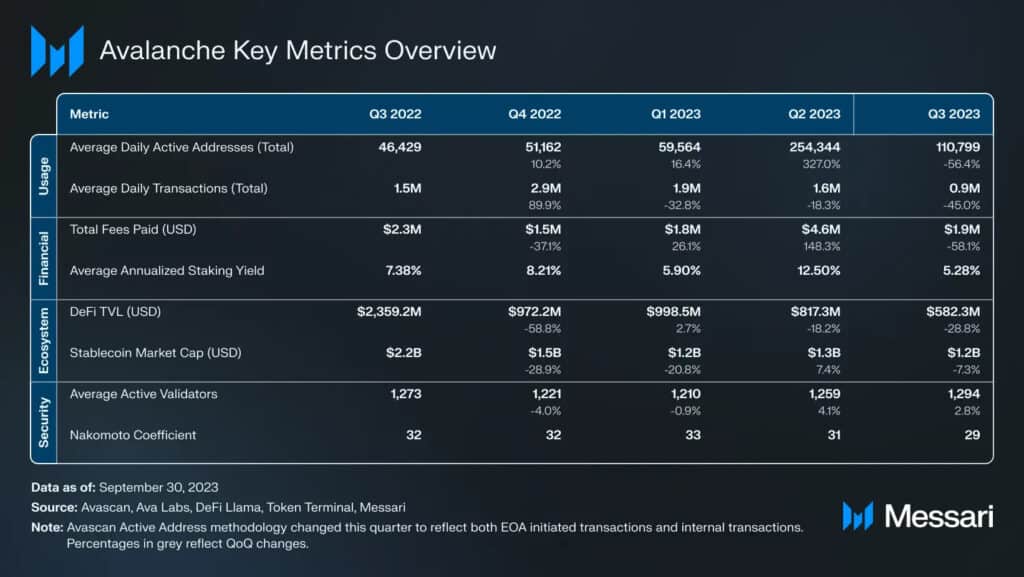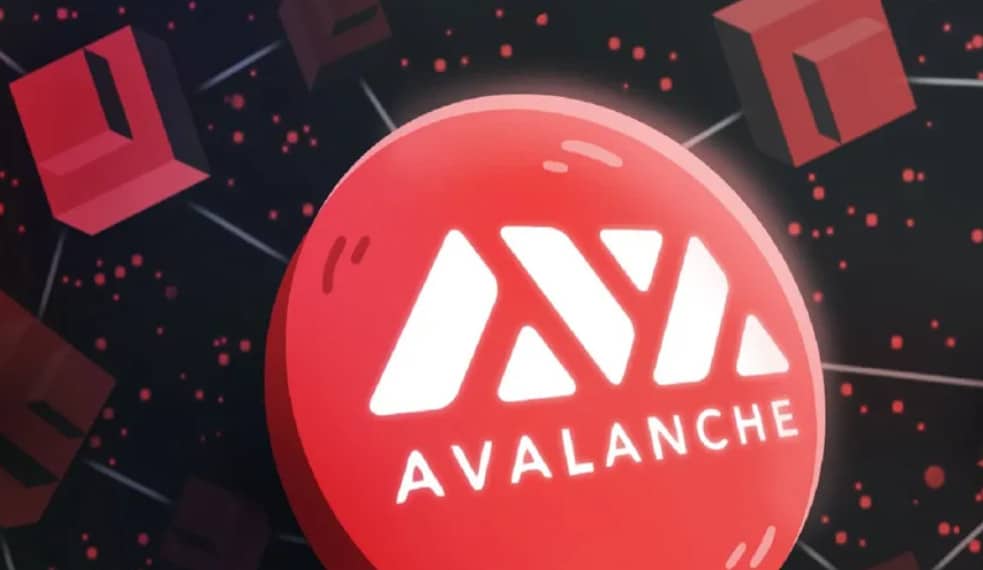October began with a promise for AVAX, the native token of the Avalanche network. Within the first week of the month, AVAX witnessed a bullish surge, pushing its value up by more than 10%. However, the crypto market’s capricious nature took a turn, and a trend reversal ensued, causing the coin to shed its hard-earned gains.
The ominous-sounding Death Cross played a role in this shift, causing AVAX to erase all its gains from the initial price jump. The second week of October didn’t fare any better, as the coin dropped an additional 5%.

The third week saw a bearish trend trap, with bearish forces pushing AVAX’s price down, reversing any gains that had been made. Despite this, AVAX managed to hold its support level, returning from its weekly low of $8.77, with the current trading price at $9.19, albeit still lower than its monthly peak of $11.14.
At present, the Avalanche price hovers perilously close to its resistance trendline. Bulls are attempting to stage a breakout, potentially setting the stage for a significant price action in the coming days.

If they succeed in breaking through the resistance trendline, AVAX’s price could gain momentum and aim to test the $9.60 resistance level. Should this momentum persist, AVAX might even make a run at the upper resistance level of $9.96 in the near future.
Conversely, if the bears continue to dominate the market, AVAX’s price may breach its support level at $9.11, further losing momentum and a sustained bearish influence. In a worst-case scenario, if the bulls fail to maintain control, AVAX could test a critical support level at $8.75.
Avalanche Promising Insights from Q3 Report
Despite the tumultuous market conditions, there’s a glimmer of hope for AVAX’s potential rise. According to Messari’s research, the State of Avalanche in Q3 2023 reveals some promising insights. Active addresses on the Avalanche network have remained steady, except for the impact of LayerZero-related activity, which saw a sharp drop-off in the second quarter.

In the DeFi space, total value locked (TVL) fell by 28.8% in the third quarter compared to Q2. However, stablecoins have defied this trend, remaining on the Avalanche network. Partnerships in gaming and real-world assets (RWA) have been key highlights in Q3, with new subnets taking advantage of Avalanche’s customizability.
Despite a 62% DFK activity drop, the largest subnet by transactions in Q2, Dexalot usage continued to rise, with transactions increasing by 110% in Q3. Furthermore, the announcement of Hyperspace launching support for Avalanche NFTs and the release of the Dokyo collection resulted in the highest NFT sales in over a year, with over 160,000 transactions in Q3.
Well, the tug-of-war between bulls and bears will likely determine its fate in the days to come, while promising developments and partnerships offer a ray of hope for those who believe in its long-term potential.
Related Reading | Is Bitcoin The New Gold? Navigating A ‘Quality Flight’ Amidst US Bond Turbulence

